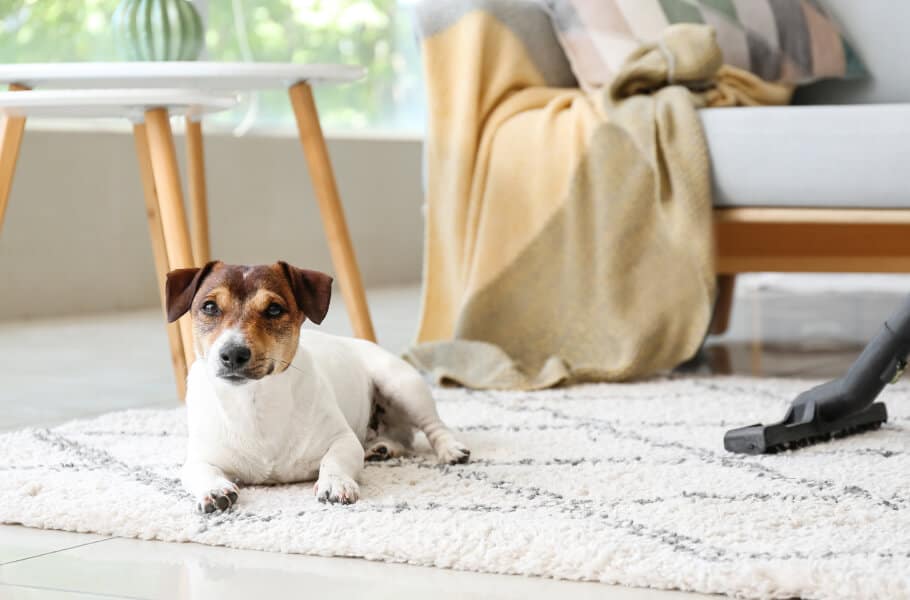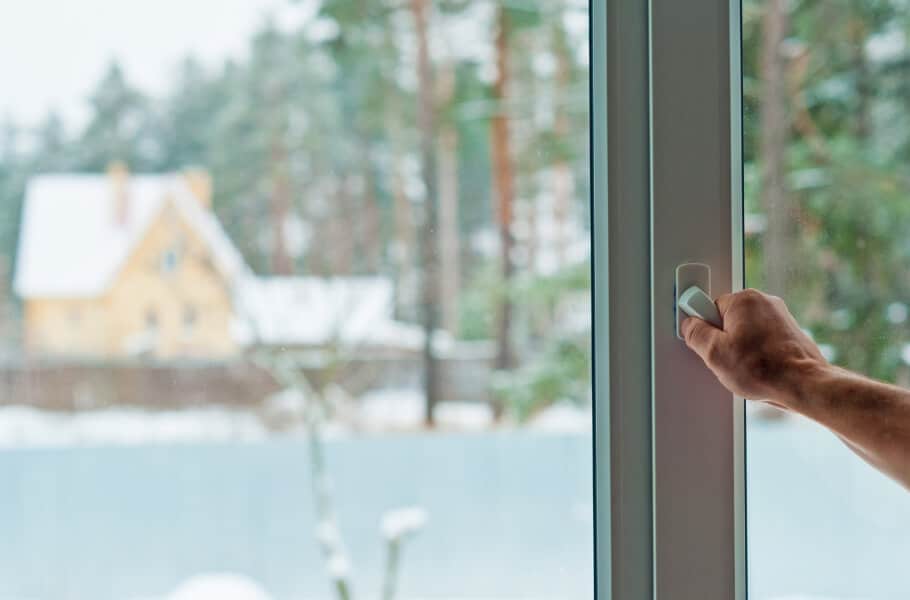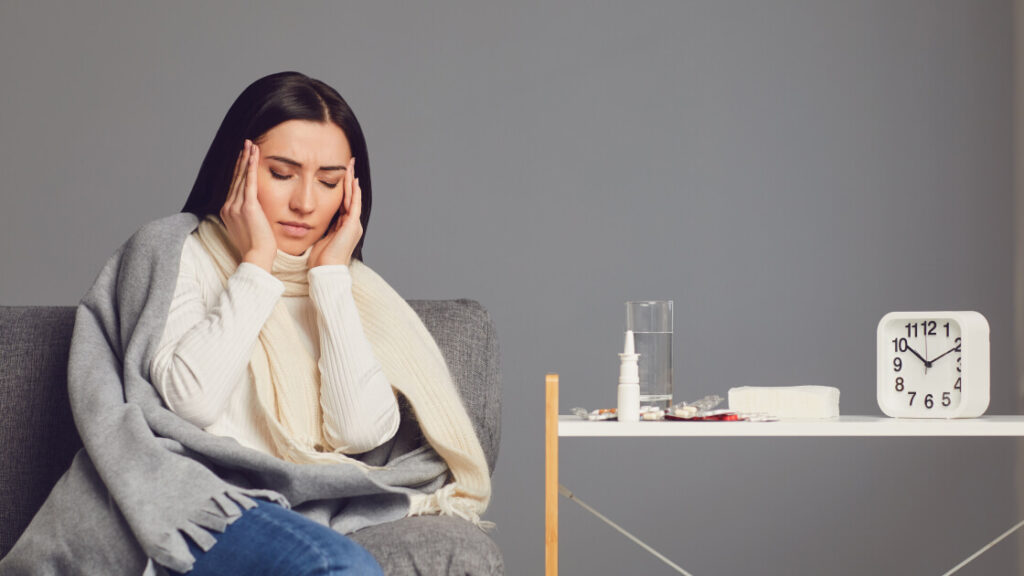A change in the season doesn’t just impact your outside environment but can also influence your indoor environments condition. Depending on the weather you experience in the winter (which for most is unbearably cold conditions), your home becomes your escape from the frigid temperatures and wet conditions outside your door. Boarding up your homes into an air tight barrier from the cold temperatures outside is very common in the northern states who are fighting off the near freezing temperatures outside. However, with little outside air being released inside the home, certain threats can plague your home and drastically impact the quality of your indoor air and the spike of respiratory allergies you can experience in the winter.
We are going to learn more about winter allergies and the respiratory symptoms associated with this condition.
Why is Air Pollution & Allergens Worse in the Winter?
Are you familiar with the recent home building practices that aim at tightly building the home with minimal ventilation in an effort to reduce energy costs? Although this practice may seem extraordinarily practical to most, come time to the winter season your tightly constructed home can leave your air quality less than clean! When you reduce the amount of warm air escaping to the outdoors and the amount of cold outside air entering in, means that the members of the household are breathing in a greater amount of recirculated air – that is not exactly labeled as ‘fresh’. What happens when you breathe in a high level of pollutants and allergens is it can trigger allergic reactions inside the body and stir up symptoms that can be called winter allergies during the winter months. Inside the home there are numerous potential airborne pollutants that can invade your environment and ultimately trigger your respiratory system and the allergic symptoms that it produces, these sources of pollution inside your air can include cleaning products, housing materials, and mold growth inside the home, and with an offset balance of insulation and ventilation these pollutants often get suck in the home and pollution will start to increase over time and create substantial air pollution and allergens inside the home. The most common sources of pollution and allergens inside your home includes the following:
- Combustion sources: Oils, gas, kerosene, coal and wood are all considered combustion sources. Any household appliance that use these fuels can significantly taint the overall air quality in your home. These appliances include wood-burning stoves, fireplaces, water heaters, dryers, and stoves.
- Household cleaning products: The go-to household cleaners that you use can be a major source of pollution in your home. Glass cleaners, air fresheners, and other cleaners contain potentially harmful chemicals that will potentially invade your indoor air and cause possible health issues.
- Housing materials & furniture: Insulation, carpeting, cabinets, or furniture made of pressed wood. These items can harbor or release various VOCs, mold, & dust mites within your home.
- Home Improvement: Home improvement activities like painting, varnishing, sanding, welding, or the use of adhesives can produce fumes that can be toxic to breathe and with the tight confinement in the winter months will become stuck within your home’s air.
- Pets: Animals are a potential culprit for poor indoor air quality – they produce dander and other particles that can be a major source of allergies and asthma to sensitive individuals. During winter the dander, dust mites, allergens and particles can accumulate within the indoor air.
- Mold: Mold is a type of fungus that commonly thrives indoors during the winter season as the conditions are desirable for growth – warm climate with moisture and poor ventilation. Mold growth in your home can produce mold spores that travel in your air and create pollutants in your home’s air.

Winter Allergies & Respiratory Symptoms
The winter season’s cold, dry weather can exacerbate certain health issues and respiratory symptoms in individuals, some that are commonly associated with the winter months. A lack of sunlight (vitamin D) and fresh air indoors will increase the likelihood of experiencing these health issues.
Allergies will spike during this time and provoke allergies such as sneezing, runny nose, and coldlike symptoms. Winter allergies are caused by allergens in the air that will elicit respiratory symptoms in an individual. What causes winter allergy symptoms?
Winter Allergies Respiratory Symptoms
The common health issues one may experience in the winter include the flu, dry skin, joint pain, asthma, seasonal affective disorder (SAD), and allergies. The winter season brings an array of undesirable conditions both outside and inside your home and learning how to combat these conditions will help improve your health during the cold season.
Best Ways to Prevent Indoor Air Pollution in Winter
According to the EPA, the best way to combat poor indoor air quality and an increase in allergies caused by winter is source control and adequate ventilation. However, during the winter season, ventilation is a major issue that plagues most households. Inadequate ventilation will lead to an accumulation of indoor pollutants inside your home that will potentially aid in the development of airborne illnesses such as allergies and asthma. What can you do to reduce & prevent indoor air pollution in your home during the winter?
1.) Clean Regularly

Something as simple as cleaning and keeping a tightly home can help to reduce & prevent indoor air contaminants. When you are stuck inside your home during the winter months, dusting, vacuuming, and mopping will significantly help to combat pollutants such as pet dander and dust/dust mites. Be sure to use proper cleaning equipment like dust cloths and masks.
2.) Replace Air Filters that Collect Allergens
When the winter season rolls around your heating unit will be constantly running, leaving your filter with some major work to keep the air clean throughout the season. Filters need to be replaced every so often (some more than others depending on the type of filter used), be sure to regularly maintain your filter and replace when necessary, especially during the winter. As the air is circulating throughout the home, filters reduce polluting particles by catching them in a filter media, but as the filter becomes filled with particles it lessens the effectiveness of the filter and depending on the type of filter it may release these collected pollutants back into the air. Be sure to look at the MERV rating “Minimum Efficiency Reporting Value” to ensure you have a quality HVAC filter that can effectively collect and eliminate pollutants without the risk of them being re-released back into the air.
3.) Use Safe Cleaning Products
Cleaning products that are typically used in the home usually contain numerous chemicals that have the potential to be hazardous to human health when long exposure occurs. When your home is boarded up airtight in the winter months, the possibility of being exposed to these chemicals for a long duration of time is an imminent threat to health. When purchasing cleaning products be cognizant of the ingredients used in the cleaners and try purchasing non-toxic cleaning products that carry no risks to your health and air quality.
4.) Air Out Home
Indoor air will collect and gather an accumulation of air pollutants that can become trapped inside a home with poor ventilation. Opening windows and doors will significantly help to bring in fresh air and filter out those pollutants, however, during the winter this may be an unfeasible solution to your indoor air quality issues. A home air purifier, on the other hand, could be the solution to all your indoor air pollutant problems.
5.) Winter Allergy Remedy: Natural Air Purifier for Mold & Pollutant Elimination
A natural air purifier works to eliminate any indoor air pollutants within your home’s air and does this through the use of an earth-friendly, nontoxic process that provides no risk to your health or your air. Many issues are presented to your indoor air during the winter season including poor ventilation, sources of indoor pollution, and the cold wet climate that can potentially lead to mold growth within your home. Mold produces pollutants into the air called mold spores that will aid in adverse health conditions such as the exacerbation of asthma and allergies and in some cases extreme health conditions. An air purification device will aid in the removal of both pollutants such as VOCs and other particulates, & contaminants produced from mold within the home such as the hazardous mold spores created from indoor mold.
The list of air purification devices is endless but selecting the ideal air purification device for your home and the amalgam of air pollutants contained inside your home is a hurdle many homeowners have to go through when purchasing an air purifier. The technology behind many air purifiers are standard and can be found in most air purifiers, these include carbon (activated carbon), ozone, ionizer, & PECO.
These different technologies each have their benefits and cons – most importantly the risks of by-products being re-released back into the environment. However, the patented technology of the EnviroKlenz Mobile UV Air System air purifier is unlike any of the standard technologies that we are used to in air purification devices. EnviroKlenz utilizes a patented earth mineral technology that is formulated to be highly reactive against a broad spectrum of hazardous chemicals and noxious odors found in the air. The proprietary EnviroKlenz technology is the first -stage of filtration within the two-stage filtration process in the EnviroKlenz Mobile UV Air System. This stage utilizes an Air Cartridge with the advanced EnviroKlenz technology that collects and neutralizes a broad array of VOCs, chemicals, and odors. The second stage is a hospital-grade HEPA filter that captures particulates larger than 0.3 microns in size including microorganisms. In between the EnviroKlenz Air Cartridge and the hospital-grade HEPA filter is two – UVC lights that effectively shine onto the HEPA filter to provide a high-efficiency of kill to the collected microorganisms on the HEPA filter – including bacteria, viruses, and mold spores.








